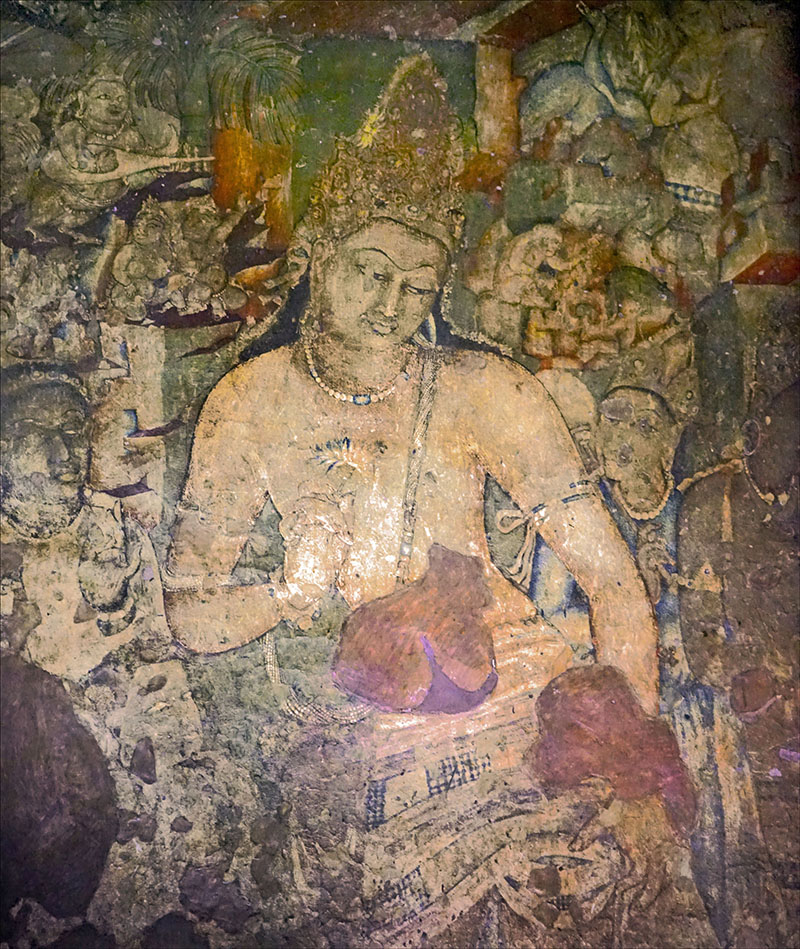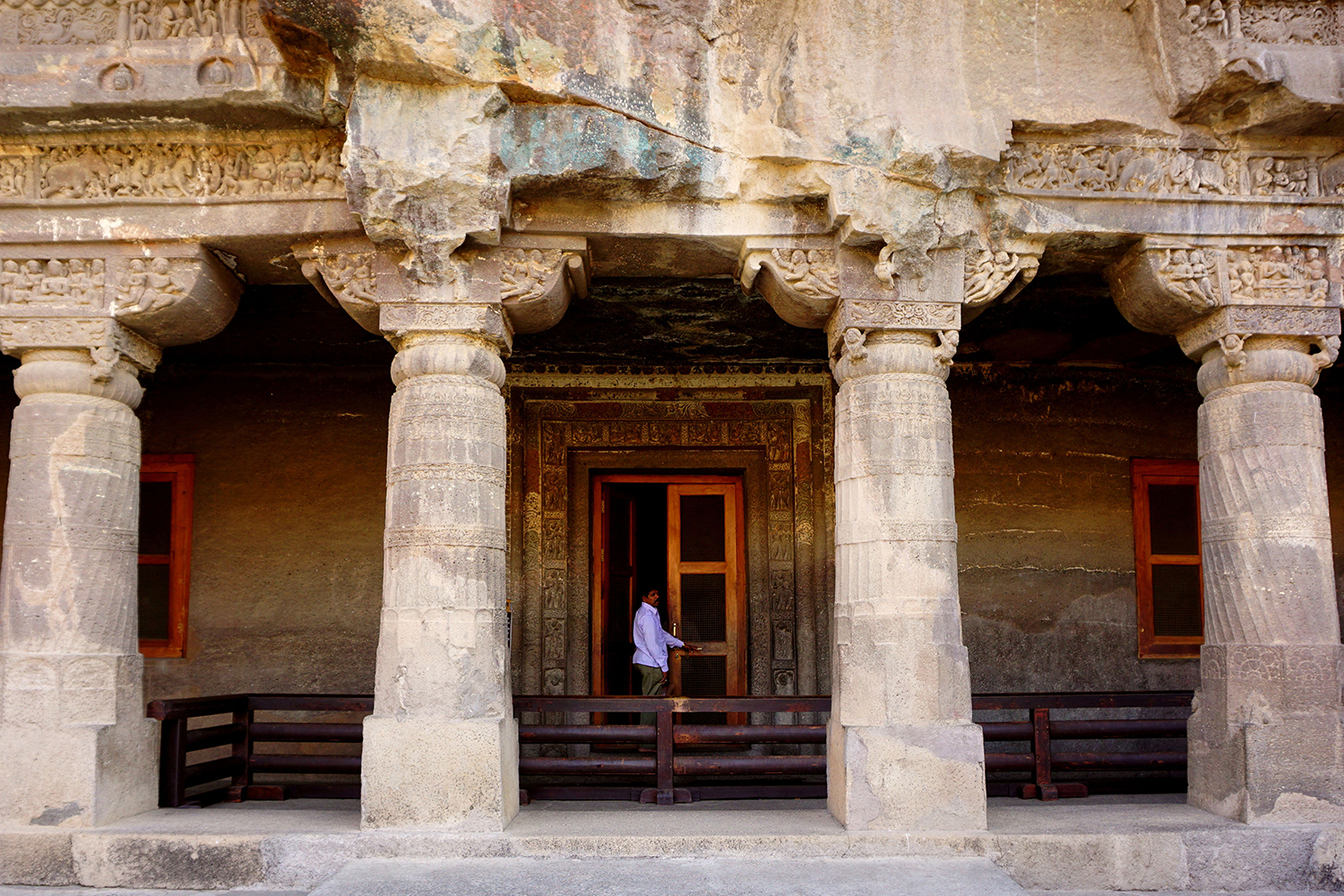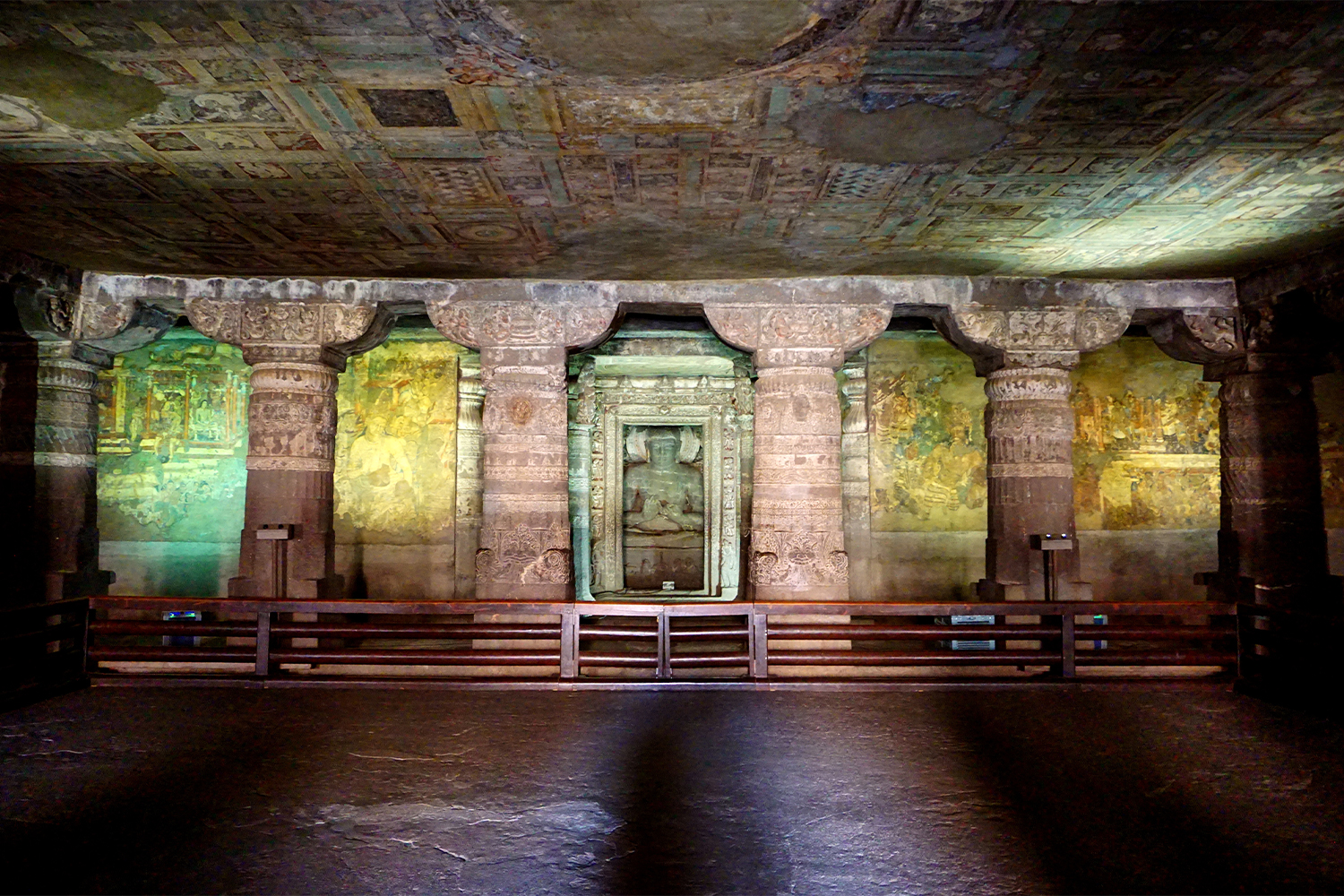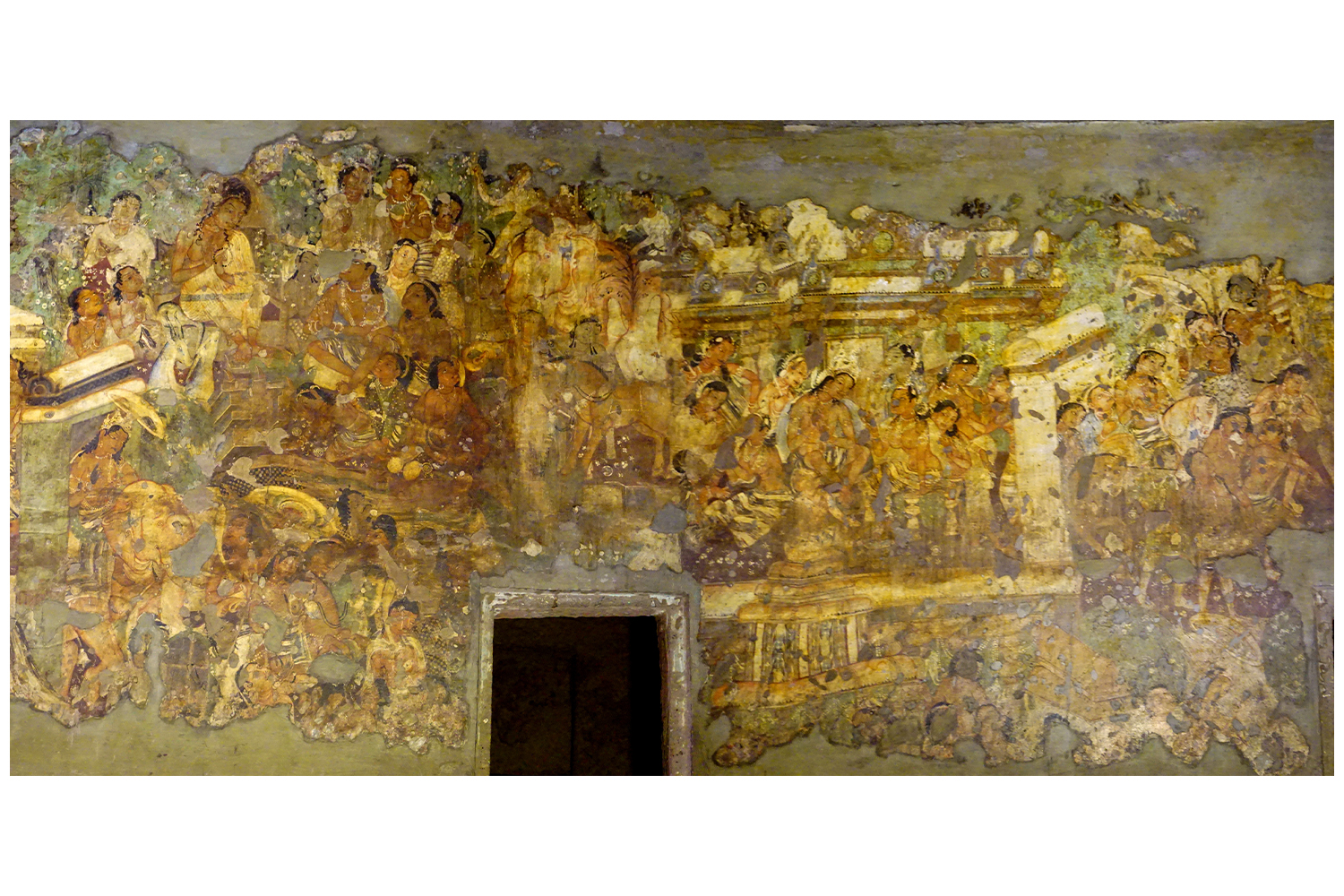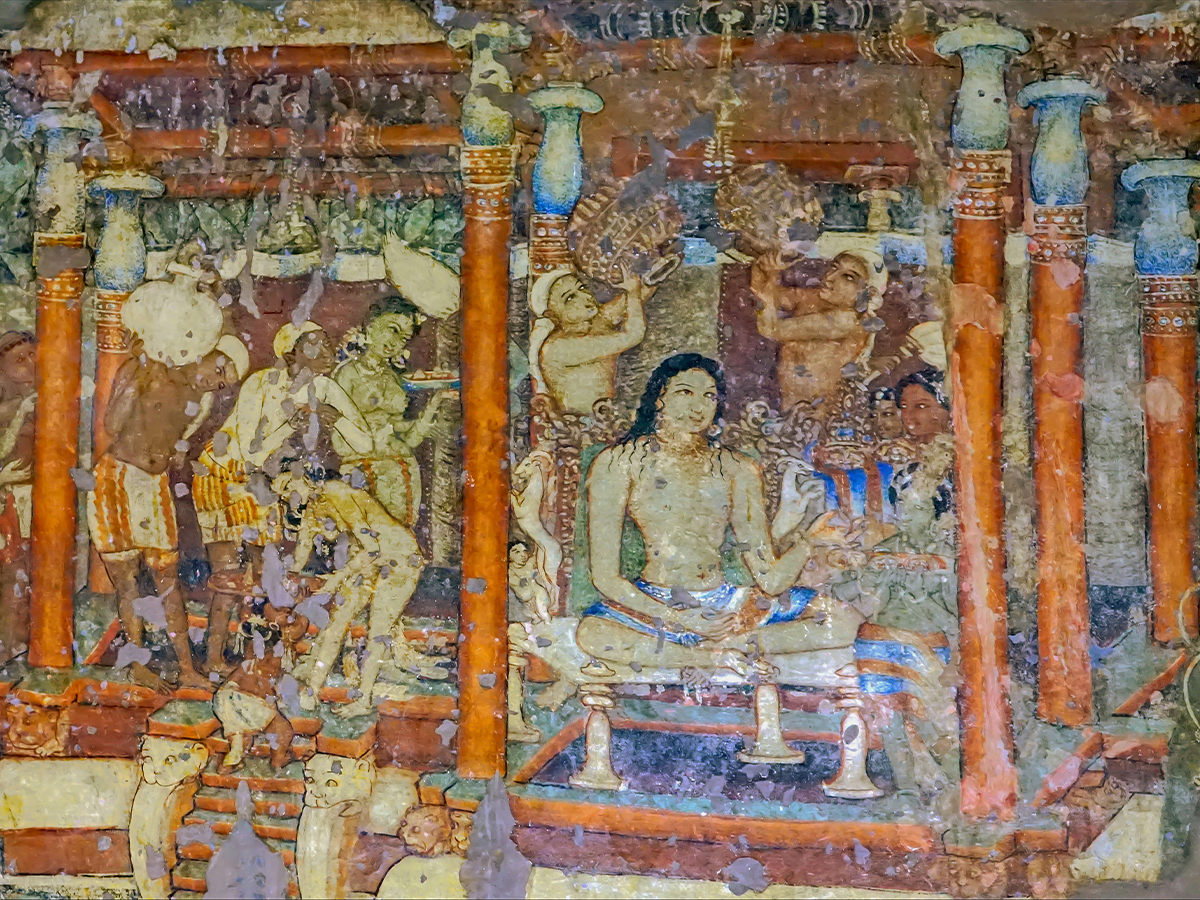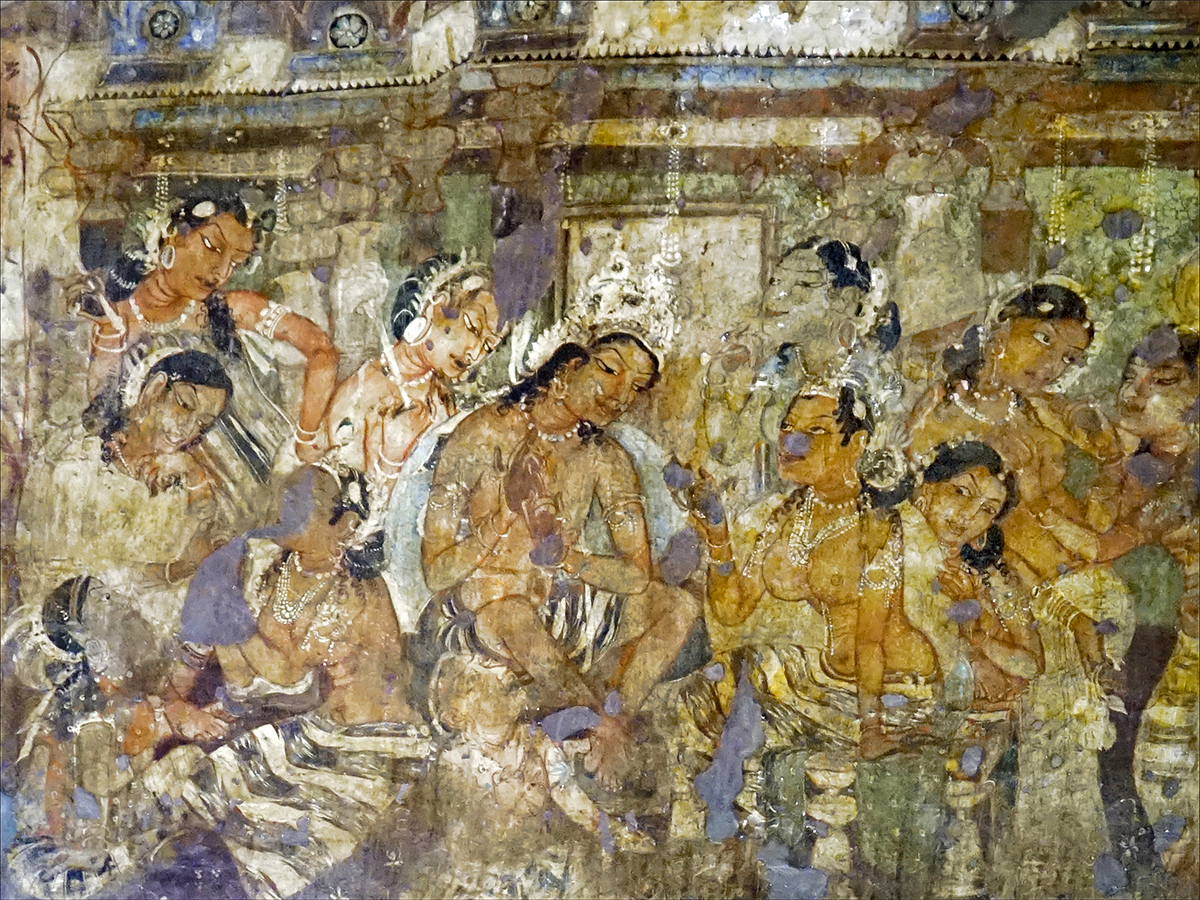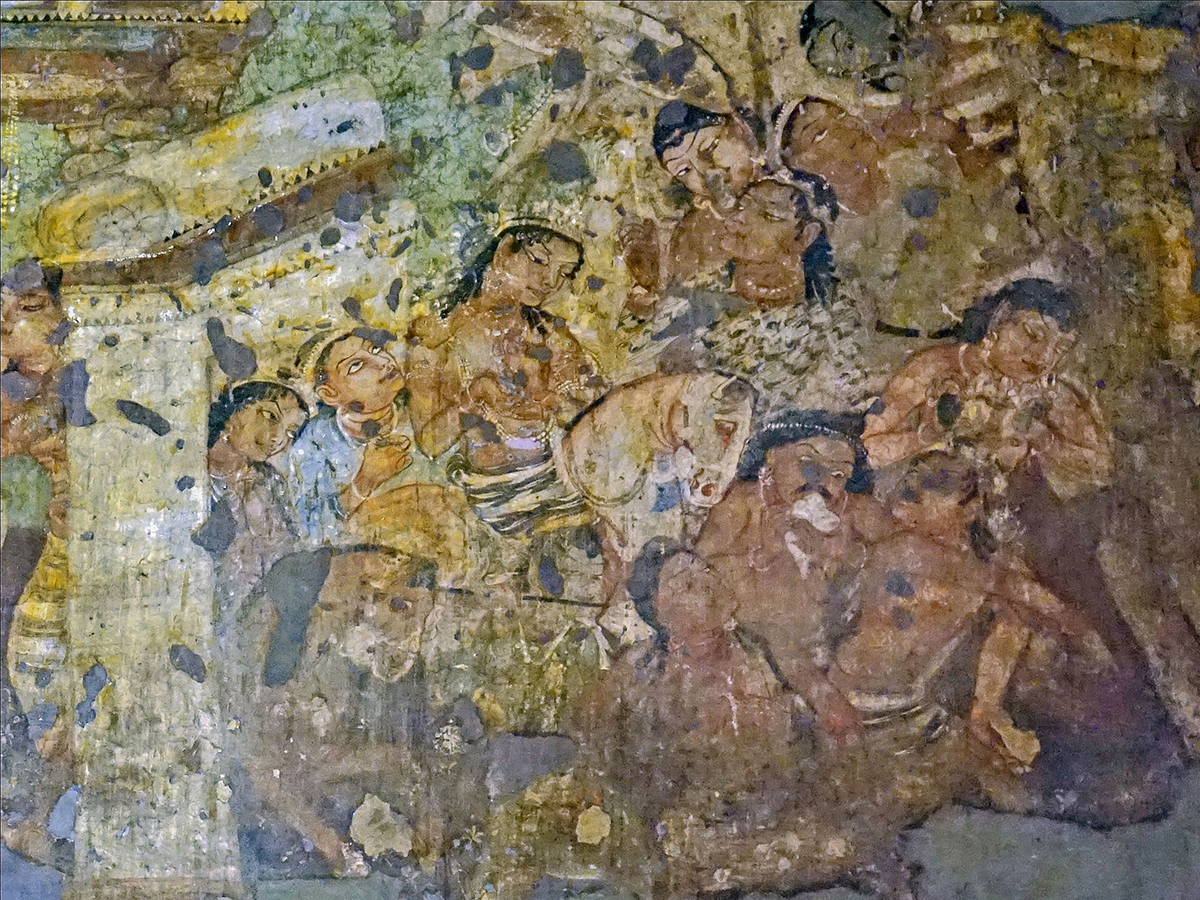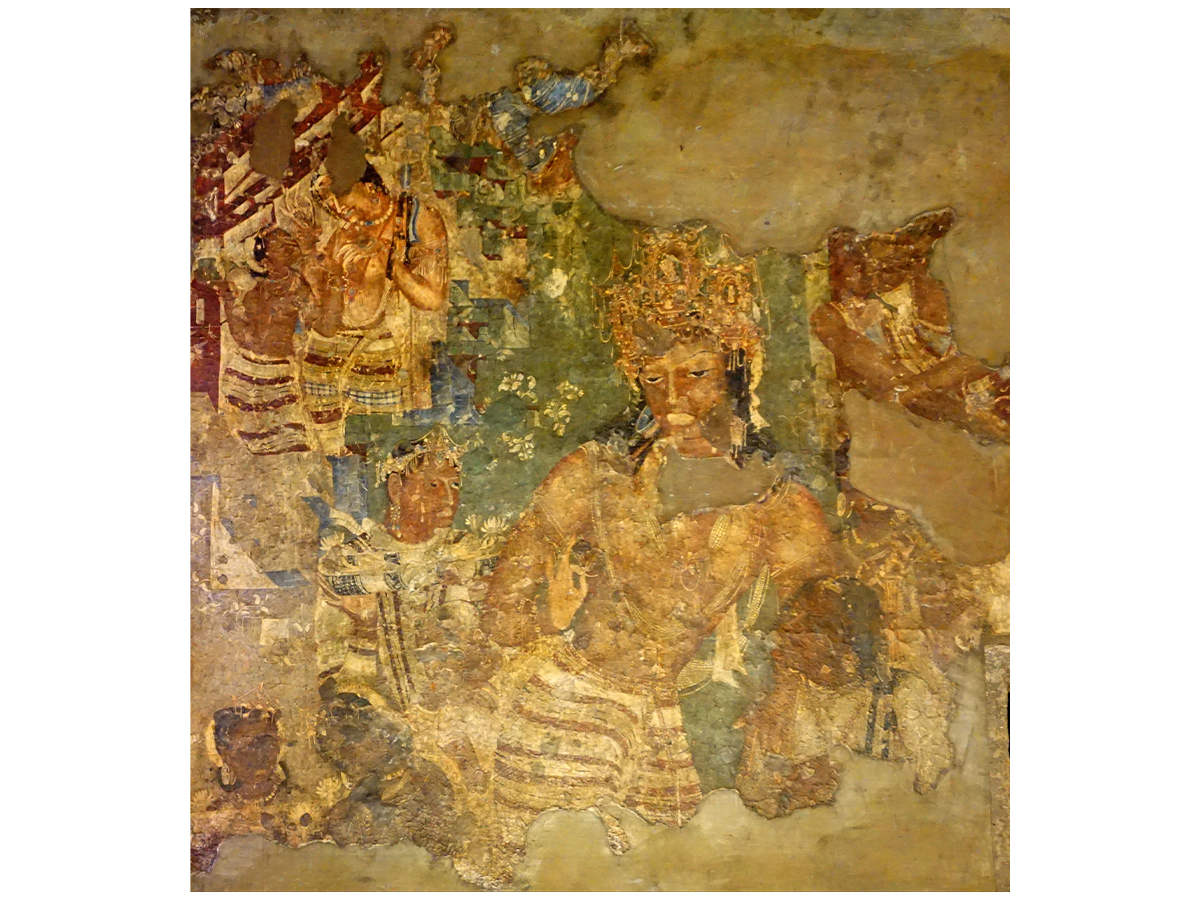ARTICLE
Ajanta Cave 1
The capitals and panels of the pillars in the cave depict the Buddha and stupas, flanked by devotees and other attendants. Other sculptural decorations include figures of animals, humans and mystical beings such as apsaras and gandharvas. The façade of the cave features carvings of domestic scenes and mithuna couples; the frieze panels depict numerous animals such as elephants, sardulas and fighting buffaloes. The animal carvings on the doorways, including lion heads and sardulas, have been interpreted to have royal significance. The doorways of the cave feature sculptures of dvarapalas, with the entryway into the main cave and the inner shrine being guarded by sculptures of nagas.
Cave 1 is also known for housing some of the most intricate of the Ajanta murals. The entrance to the shrine’s antechamber at the rear end is flanked by murals of two large bodhisattvas. The one on the left is 2.12 metres long and 2.07 metres wide and depicts the bodhisattva Padmapani, surrounded by terrestrial and celestial attendants. Although he is generally depicted as an ascetic, with matted hair, a pilgrim’s flask and a lotus, the mural here presents him as wearing an ornate crown, perhaps a reflection of the courtly tastes of its patrons. The mural on the right wall depicts Vajrapani, the bodhisattva associated with knowledge, power and kingship. He is depicted as heavily bejewelled and wearing an elaborate headdress, leaning on a burly anthropomorphised vajra. An attendant, also richly crowned, is shown making an offering of fresh flowers to the bodhisattva. This mural is over 2.27 metres long and 1.64 metres wide.
Other murals depict stories from texts such as the Jatakas, especially those that focus on the Buddha’s previous lives as a king and a bodhisattva; this preoccupation with royal imagery is one of the reasons why Cave 1 is generally associated with Harisena. The Sibi Jataka is depicted on the wall to the left of the main entrance, and is the first mural visible when the cave is entered. While the version depicted here appears to be based on Brahminical texts such as the Mahabharata, a mural closer to the Buddhist version can be found in Cave 17. Also along the left wall of the cave is what is possibly a depiction of the Mahajanaka Jataka, over 7 metres long and varying from 1.36 to 1.92 metres wide. Some scholars dispute the identification of the king as Mahajanaka, and instead identify the mural as depicting the Mahavastu Avadana.
Scholars have suggested that Deccan elites of the fifth century, including royals, noblemen and merchants, participated in a highly refined aesthetic and material culture while simultaneously patronising Buddhism — which in principle preached renunciation and asceticism. This explains the intricacy and abundance of ornamentation and detail in the cave’s sculptures and murals; many sculptures depict scenes that are considered to be of royal interest, such as hunting and war.
The narrative frieze on the left wing of the cave, which is partially broken, appears to depict scenes and stories from the life of the prince Siddhartha. Stories from his journey towards enlightenment, such as the Temptation of Mara and the Offering of Milk-Rice Pudding by Sujata, have been carved on the capitals of the pillars and pilasters of the main façade. These have led scholars to conclude that the cave may have represented the ideal spiritual development of a prince through the Buddha’s own spiritual odyssey.
Cave 1 is relatively well preserved. This has been attributed to the fact that it was never finished or dedicated for worship, as indicated by the absence of deposits from lamps as well as the lack of damage that might have been caused by garland hooks. There is evidence that the sculptures in the cave may have been covered in plaster and painted, although there is very little that remains of these painted surfaces today.
The murals were listed as a UNESCO World Heritage Site as part of the Ajanta caves complex in 1983, and are a major tourist attraction to the present day.
Bibliography
Our website is currently undergoing maintenance and re-design, due to which we have had to take down some of our bibliographies. While these will be re-published shortly, you can request references for specific articles by writing to hellomapacademy@map-india.org.




